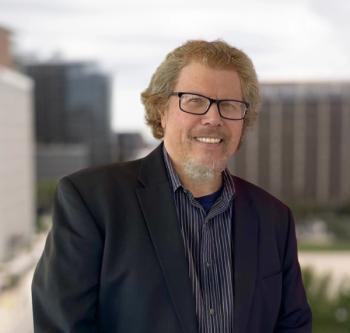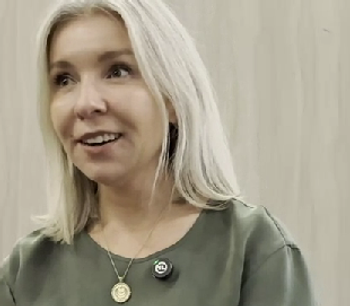
What Is State of the Art Treatment for MDD?
CONFERENCE REPORTER
“Is there one state-of-the-art treatment for depression? No, that was the dilemma I faced in trying to prepare for this talk,” Sidney Zisook, MD, told attendees at the
“There is no state-of-the-art treatment because
Because of this heterogeneity and the many combinations, there are a number of issues and features that should be assessed for each patient. Zisook discussed a recent review that revealed 14 key areas: symptom profile, clinical subtypes, severity, neurocognition, functioning and quality of life, clinical staging, personality traits, antecedent and concomitant psychiatric conditions, physical comorbidities, family history, early and recent environmental exposures, protective factors, resilience, and dysfunctional cognitive schema.1
Thus, the best care practice—which is really what makes for state-of-the-art treatment for MDD—begins and continues with a thorough history, Zisook said. “A really thorough history begins with lab studies, physical exam, etc,” he said. “But the initial assessment isn't enough. We want to repeat the workup for patients who aren't doing well over time. I can't tell you how many times in my career, when I redid my initial assessment 6 months down the line and somebody wasn't having a good response, how different that history was and how I now—for the first time—learned about their drinking history and the cocktails they had every night. Or their early life trauma that was very much affecting their day-to-day life as an adult, etc. So not only do you do good assessment to begin with, repeat it intermittently as you have a better relationship with the patient to get a better, fuller picture of who they are.”
This includes checking for coocurring conditions and ensuring treatment for those conditions, too, Zisook said.
Similarly, he said it is important to use measurement-based care to inform decisions. “Several studies2 have found that if you measure symptoms, if you measure side effects, even with a global side effect measure along the way, share those with the patients, and develop a diary of symptoms and tolerance, you'll actually end up with better results,” Zisook reported.
Then, clinicians should dip into the wide variety of choices from what he called the “2022 Antidepressant Tool Kit.” In terms of medications, Zisook said all FDA-approved antidepressants (ie, tricyclics, monoamine oxidase inhibitors, selective serotonin reuptake inhibitors, serotonin-norepinephrine reuptake inhibitors, serotonin modulators, and atypical antidepressants, and novel nonmonoamines) are equally effective with some differing adverse effects.
When discussing medication treatment personalization, the topic of
However, testing can provide information on the genes involved in the metabolism of antidepressants (eg, CYP2D6, 2C19, 1A2, 2C9, 342, and 2B6), how the drug may be metabolized in patients, and whether the medications should be used as usual, with caution, or with extra caution and increased monitoring. “If they [patients] are a very poor metabolizer, they may end up with a very high dose of the medication that you're providing in their system, and they may be more prone to significant side effects adversity and tolerance, etc. You may need to go slower or lower or avoid certain medications,” he advised attendees.
Brain stimulation options (ie, bright light therapy, electroconvulsive therapy, transcranial magnetic stimulation, and vagus nerve stimulation) are also effective strategies in the tool kit, he noted.
Furthermore, Zisook reminded attendees not to overlook the
Lifestyle aids, like exercise, are also important, he noted. “I tell all my patients, ‘When you're feeling more energetic, when you're up to it, start exercising. Get out of the house, take advantage the sunlight.’ They may not be able to do it initially. But I plant the seed early on and go back to it.”
The therapeutic alliance is key, Zisook said, and sometimes may be overlooked. He shared results from an NIMH study that found psychiatrists can “augment the effects” of both the medications as well as placebo.4 “Those patients who had the best results even with placebo were the ones that maximized the nontherapeutic, nonspecific factors that are common to psychotherapy that's effective, like developing a therapeutic alliance: getting a trustful, empathetic, and collaborative relationship with a patient,” he said.
“Take advantage of those factors—and yourself,” Zisook advised. “This may mean spending more than 20 minutes with a patient. It may mean seeing their family. It may mean talking about their life independent of their depressive symptoms. But that relationship is critical in helping many of our patients get better.”
Zisook concluded by reminding attendees of their network of support, and the importance of engaging colleagues as needed. “Never worry alone,” he said. “It's always so nice when you're treating people with depression—especially difficult to treat depression—to have a colleague, other people that you can work with, you can consult with, to talk about patients. And I've always found that a critical part of my overall practice.”
References
1. Maj M, Stein DJ, Parker G, et al.
2. Rush AJ, Sackeim HA, Conway CR, et al.
3. Zisook S.
4. McKay KM, Imel ZE, Wampold BE.
Newsletter
Receive trusted psychiatric news, expert analysis, and clinical insights — subscribe today to support your practice and your patients.

















